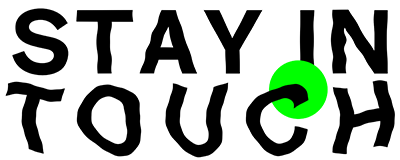2016 – »Sympoiesis is a simple word; it means ›making-with‹. Nothing makes itself; nothing is really autopoietic or self-organizing.«
Donna Haraway’s Staying with the Trouble. Making Kin in the Chthulucene revisited, part II
By Katrin Solhdju
Donna Haraway’s Staying with the Trouble. Making Kin in the Chthulucene
Third thread: Staying with the Trouble traces the response-able production of positions beyond infernal alternatives along diverse sites of exploration—for example, by following pigeons. Haraway uses tales about pigeons to question opposites like friend and foe, the own and foreign, but also between anti-speciesism and the mistreatment of animals. She reports on the project PigeonBlog in which researcher-artist-engineers and their animal colleagues revived the almost defunct proficiencies of pigeon-human kinship from the history of carrier pigeon and racing pigeon practices. Birds equipped with measurement devices helped to record and chart air pollution maps of urban regions in Los Angeles, which had been systematically ignored by the authorities: »multispecies art in action for mundane worlds in need of—and capable of—recuperation across consequential differences.« (21) Haraway describes how this project was almost boycotted before it even began because animal right activists accused it of animal abuse. This case illustrates quite clearly that there is no innocent position, regardless how well-intended it might be, rather only situated practices, which are more or less response-able. But also the actors, human or nonhuman, can never be classified as being either good or evil. Pigeons are one of the best examples of this: »They are treasured kin and despised pests, subjects of rescue and of invective, bearers of rights and components of the animal-machine, food and neighbor, targets of extermination and of biotechnological breeding and multiplication, companions in work and play and carriers of disease, contested subjects and objects of ›modern progress‹ and ›backward tradition.‹« (15) It always depends on which pigeons, how many pigeons, and grouped into which ecological and interspecific relations. In this sense, pigeons are similar to humans—proliferating population density is a recurring theme in Staying with the Trouble, which Haraway responds to with the motto »Make Kin Not Babies!«—just like viruses, which for their part cannot be unambiguously classified into the realm of enemies. In a milieu unprepared for them, viruses evince destructive effects with their wild leaps from host to host. In other contexts, however, they can have therapeutic functions, for example, where they are (targetedly) deployed to defang aggressive bacteria. Either-or situations should be treated with caution.
In the current situation we cannot counter the war against the virus with a romanticizing celebration of viral in- and affection. One of the many-voiced mottos that Haraway asserts in Staying with the Trouble could perhaps help us here to imagine a third position. With reference to the Crochet Coral Reef project initiated by the Wertheim sisters—an exploration of bleached out coral reefs in which thousands of women at different locations around the world crochet all sorts of different materials into whimsical creatures, furnishing the reefs with new color and thereby provoking a vital form of terrestrial and marine attention—Haraway speaks of a care practice of »intimacy without proximity«. (79) If this expression in the coral reef context entails the establishment of a profound familiarization or kin-making of the actors with the threatened habitat of the ocean without touching it, then intuitively the motto »intimacy without proximity« seems fruitful in the corona situation too, namely in at least two regards: in terms of our relationship to the virus itself and its potential »carriers«, but also with respect to new, extraordinarily intimate interhuman connections, which have taken shape in many places despite the quarantine and in very different manifestations.
Fourth thread: »Sympoiesis is a simple word; it means ›making-with.‹ Nothing makes itself; nothing is really autopoietic or self-organizing.« Contemporary methods in biology also play a role in Staying with the Trouble, allowing Haraway to deny the quite conceivable accusation of employing an all-too imaginative-fabulative approach. A biologist herself, Haraway refers to the holobiont theory of Lynn Margulis and to works of her former student Scott Gilbert and his colleagues. In 2012 Gilbert published an article together with Jan Sapp and Alfred Tauber in The Quarterly Review of Biology, which investigated the biological notion of individuality and bears the provocative subtitle »We Have Never Been Individuals«. The researchers programmatically showdown with the paradigm of self-organization in biology by underlining cooperative processes. The appeal of these types of biological sym-research resides not only in the fact that they reflect the reality of the matter more concisely, but also that they facilitate new perspectives on moral and political questions of our time. A common intuition preoccupies Haraway and these biological approaches: that our political and ecological situation urgently needs a closer look into interrelations, interspecific contexts, and multiple dependencies, but also to spark and dramatize a sensibility for extinction, the disappearance of species as well as our ways of remembering them. In Haraway’s words, a symanimagenic rethinking is required when we hope to keep inhabiting this Earth for a while longer. Conceiving ourselves as an enclosed autopoietic organism or, rather, believing that one’s livelihood is sustained by a sympoietic or better symanimagenic entanglement of threads changes everything: above all, things that we are literally response-able for. Becoming sensitive for connections, for what we inherit and pass on, what we are affected by and, in turn, what we influence biologically and otherwise is for Haraway the most important art form to be nurtured today. A radically situated art that does not aim to connect everything with everything else, but to build niches inhabited by certain symbionts or sympoietic entities, who could succeed together in making the lives of others worth living.
Haraway celebrates the reciprocal exchange of body fluids, viruses, bacteria, and affects in equal measure; a celebration that culminates in the science fictional »Camille Stories« where—departing from the dramatic number of species on the verge of disappearance—she imagines a future world in which each child has at least three human parents and one nonhuman symbiont. The symbiont is an existential part of human life, and s/he has to care for its well-being. Here, too, coexistence is by no means free of tension, rather often full of risks, namely for all of those involved—Haraway has no penchant for romanticism.
In times of corona it is quite impossible not to dance around oddly on the sidewalk like a lost astronaut, trying to avoid your fellow human being—a potential source of infection—as elegantly as possible but inevitably with two left feet. And it doesn’t help much that more and more faces are tucked behind all kinds of different masks either. But you would be getting Haraway wrong if you concluded from her predilection for the symbiotic that you simply should accept certain realities and expose yourself and others to the risk in the name of some equally abstract love for exchange with all lifeforms—viruses included—cost what it may. No, and this is where Haraway refers explicitly and repeatedly to Isabelle Stengers’ pragmatist thinking. That is: »decisions must take place somehow in the presence of those who will bear their consequences.« (12) However, Staying with the Trouble cannot be accomplished by following a pure virological and epidemiological logic, and thus considering oneself as being in the know and as innocent as possible at the same time. The price of social isolation/distancing, for example, can only be estimated per situation, from case to case, taking into account all parameters that are of existential importance to each of us. Think of the dramas directly linked to the pandemic, but also the more than depressing social-psychological side-effects of the sanitary measures in retirement and nursing homes since the crisis broke out. That gives ample food for thought about the criteria for the respective restriction to be made.
Already in her much older text on »The Biopolitics of Postmodern Bodies«, Donna Haraway wrote quite impressively against the backdrop of the somewhat differently knit AIDS crisis: »Life is a window of vulnerability. It seems a mistake to close it. The perfection of the fully defended, ›victorious‹ self is a chilling fantasy, linking phagocytotic amoeba and moon-voyaging man cannibalizing the earth in an evolutionary teleology of postapocalypse extra-terrestrialism. It is a chilling fantasy, whether located in the abstract spaces of national discourse, or in the equally abstract spaces of our interior bodies.« (Biopolitics – A Reader, 297–298) This reflection today seems timelier than ever.

